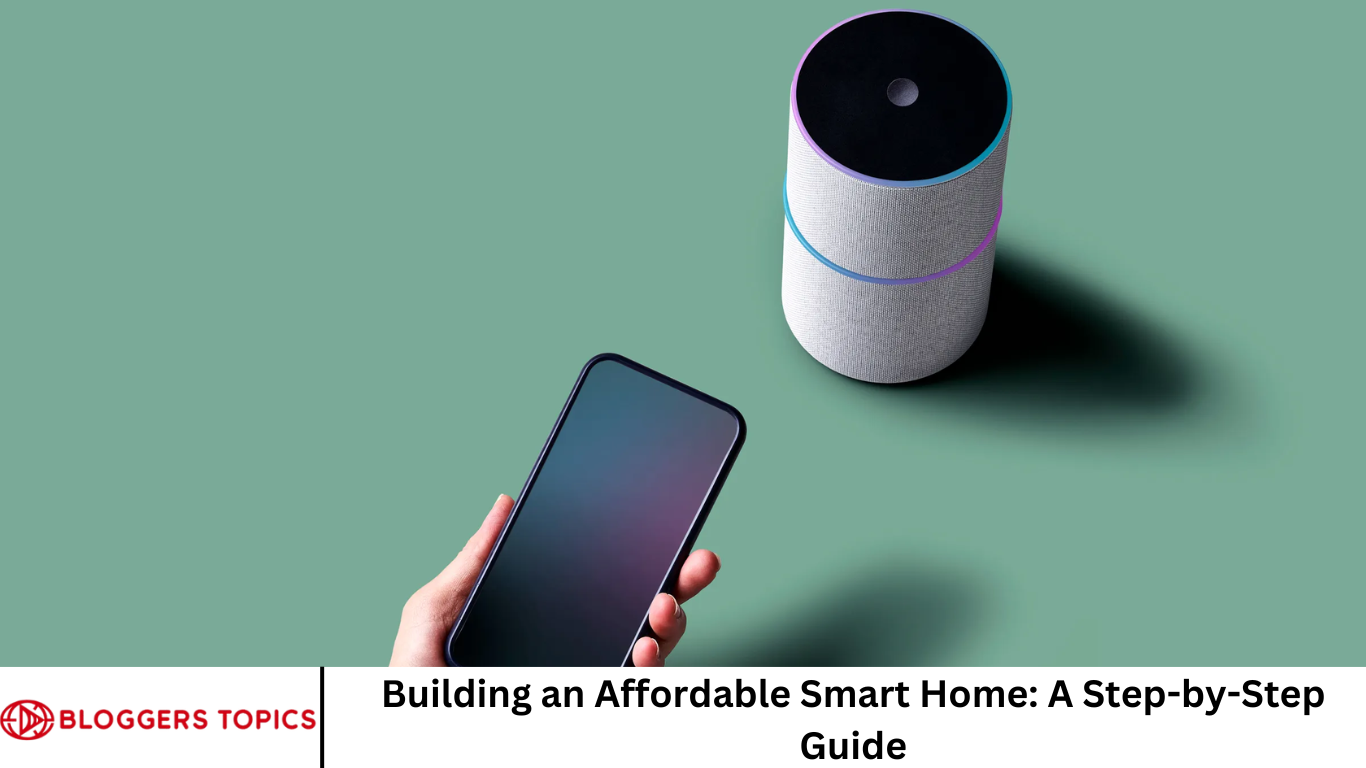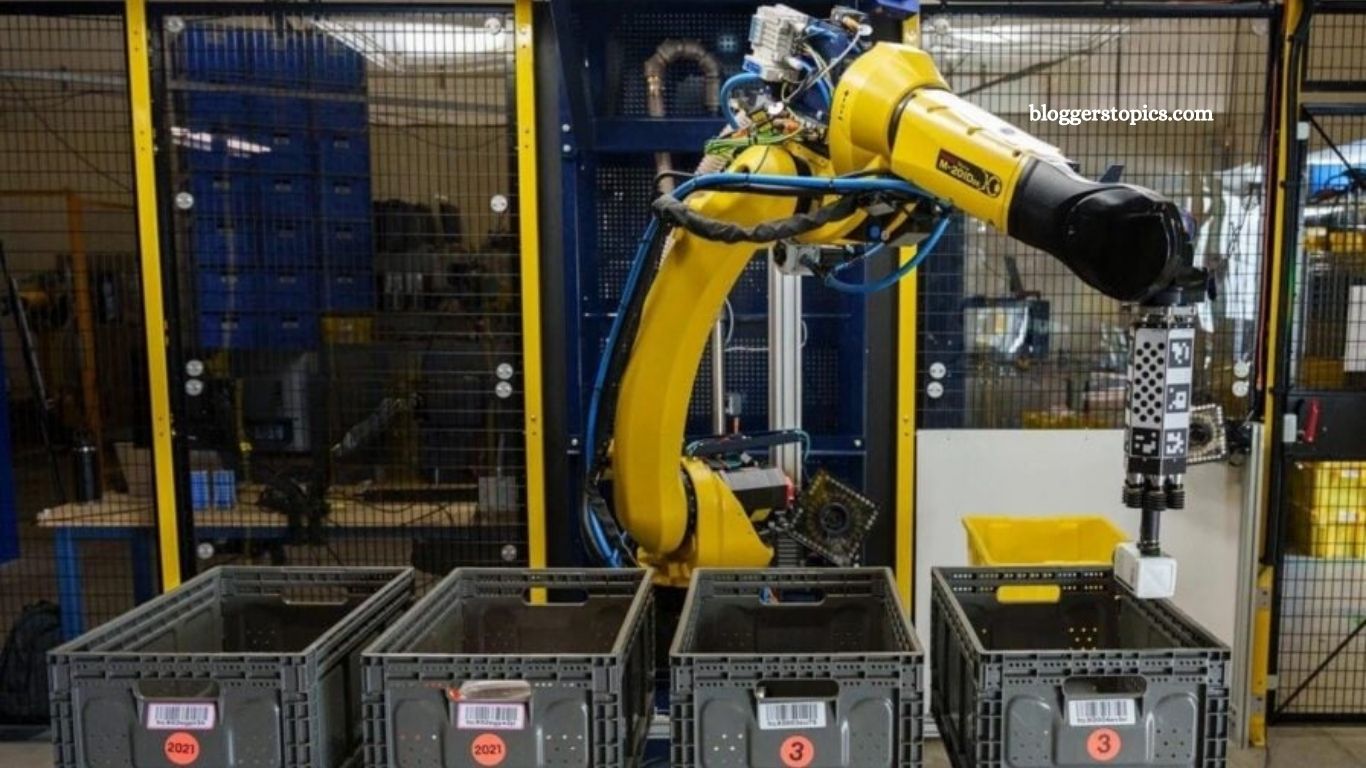Rapidly evolving tech world, creating a smart home isn’t just for tech enthusiasts or the wealthy. With smart technology becoming more affordable and accessible, homeowners and renters alike are embracing smart devices that offer convenience, efficiency, and security.
But the idea of building a smart home can seem daunting, especially when considering the costs associated with high-end systems and installations. The truth is, building an affordable smart home is entirely possible with the right approach and a little planning.
This step-by-step guide will walk you through how to create a smart home on a budget, without compromising on quality or functionality. Whether you’re just getting started or looking to upgrade your current setup, this guide will help you navigate the world of budget-friendly smart home technology and ensure you’re making smart purchasing decisions.
More Read: 5G vs. Wi-Fi 6: Choosing the Right Option for Your Home or Office
Step 1: Determine Your Smart Home Needs
Before you dive into the world of smart technology, it’s essential to identify your needs. Smart homes are all about convenience and improving everyday life, so think about the areas of your home where technology could make a noticeable difference.
Key Areas to Consider:
- Home Security: If security is a top priority, smart cameras, doorbells, and alarm systems are great choices. Many affordable options offer remote monitoring, motion detection, and even two-way communication with visitors.
- Energy Efficiency: Smart thermostats, lighting systems, and plugs help you control energy usage, saving money in the long run. Consider smart lighting that adjusts based on time of day or occupancy to conserve energy. You can further cut costs by choosing from cheap electric companies, ensuring your smart home setup remains both efficient and affordable.
- Entertainment: Smart speakers, streaming devices, and smart TVs provide a seamless entertainment experience with voice control and integration with your existing devices.
- Automation and Control: Smart hubs like Amazon Alexa or Google Assistant allow you to control all of your smart devices from one interface. You can schedule actions like turning on lights or adjusting the thermostat, making your home more efficient.
- Convenience: Smart door locks, appliances, and voice assistants enhance everyday convenience, allowing you to control tasks with minimal effort.
Creating a Priority List:
Once you’ve identified the key areas you want to improve, create a list of the devices that best fit those needs. This will help you focus on purchasing items that bring the most value to your home, while avoiding unnecessary gadgets that may not provide a significant benefit.
Step 2: Set a Realistic Budget
One of the main challenges in creating a smart home is budgeting. The allure of high-end devices can make it tempting to overspend, but it’s important to set a budget that works for you. A smart home doesn’t have to cost thousands of dollars to be effective. By being strategic with your purchases, you can build a smart home without stretching your finances too thin.
Budget-Friendly Smart Home Ideas:
- Start Small: If you’re new to smart homes, consider starting with one or two key devices like a smart speaker or smart light bulbs before adding more devices. This will allow you to get a feel for the technology without overwhelming your budget.
- DIY Setup: Many smart home devices are designed for easy installation, meaning you can set them up yourself without the need for professional installation services. This saves you money on installation fees.
- Prioritize Essentials: Identify which smart devices will deliver the most value in your home, and focus your spending on those. Smart thermostats, smart plugs, and security cameras can offer significant benefits without breaking the bank.
- Look for Deals and Discounts: Keep an eye out for sales, bundles, or discounts on smart home devices. Major retailers often offer promotions, especially during holidays or special events like Black Friday or Cyber Monday.
Step 3: Choose the Right Smart Devices
The market for smart home devices is growing rapidly, and there’s no shortage of affordable options. When building an affordable smart home, you’ll want to focus on quality products that offer the best value for your money. Below are some smart devices that provide excellent functionality without costing a fortune.
Must-Have Budget-Friendly Smart Home Devices:
1. Smart Speakers
- Amazon Echo Dot: One of the most affordable smart speakers on the market, the Echo Dot integrates with Amazon Alexa, allowing you to control various smart devices with voice commands.
- Google Nest Mini: Another great option for voice control, the Nest Mini uses Google Assistant to connect with smart devices and provide a hands-free experience.
2. Smart Lighting
- Philips Hue Starter Kit: Philips Hue bulbs are popular for their customizable lighting, allowing you to adjust brightness and color. The starter kit is affordable and works with Amazon Alexa and Google Assistant.
- LIFX Bulbs: These bulbs are known for their vibrant colors and ease of setup. You can control them through an app or voice assistant, and they don’t require a hub, making them a cost-effective choice.
3. Smart Thermostats
- Google Nest Thermostat: This affordable smart thermostat helps you save on energy bills by learning your schedule and adjusting temperatures accordingly. It’s compatible with Google Assistant and integrates with other smart devices in your home.
- Ecobee3 Lite: A great alternative to the Nest, the Ecobee3 Lite offers energy savings and compatibility with Alexa and Google Assistant, and it includes room sensors for better temperature control.
4. Smart Plugs
- TP-Link Kasa Smart Plug: Smart plugs are an inexpensive way to make any appliance or light “smart.” The TP-Link Kasa plugs offer remote control, scheduling, and voice control through Alexa or Google Assistant.
- Amazon Smart Plug: Simple and easy to use, the Amazon Smart Plug works seamlessly with Alexa for hands-free control of appliances.
5. Smart Security Cameras and Doorbells
- Ring Video Doorbell: One of the most popular options for home security, the Ring Video Doorbell lets you monitor your front door with live video, two-way audio, and motion detection. There are budget models that provide essential features without breaking the bank.
- Wyze Cam v3: Wyze offers affordable indoor and outdoor security cameras with HD video, night vision, motion detection, and cloud storage. It’s an excellent budget-friendly option for securing your home.
6. Smart Locks
- August Smart Lock: A simple and affordable smart lock, the August Smart Lock allows you to control access to your home via your smartphone. It’s compatible with most deadbolts and integrates with Alexa, Google Assistant, and Apple HomeKit.
- Wyze Lock: Another budget-friendly smart lock, Wyze Lock offers keyless entry, remote control, and works with the Wyze app for easy integration with your other devices.
Step 4: Integrate and Automate
Once you’ve selected your smart devices, the next step is integration and automation. Many smart devices work best when they are connected to a smart home hub, which allows you to control all of your devices from a single platform.
Popular Smart Home Hubs:
- Amazon Alexa: If you’ve chosen Amazon Echo devices, Alexa is a natural choice for a smart home hub. It allows you to control lights, thermostats, security systems, and more through voice commands.
- Google Assistant: For Google Nest devices, Google Assistant is a seamless way to integrate and control your smart home devices.
- Apple HomeKit: If you’re an Apple user, HomeKit integrates well with a variety of smart home devices, offering a secure and cohesive ecosystem.
- Samsung SmartThings: For a more universal solution, SmartThings works with a wide variety of smart home products and can help you create a centralized control system for your home.
Automating Your Smart Home:
With your devices and hub in place, it’s time to automate. Set schedules for lights, adjust thermostat temperatures based on your routine, or set up “scenes” that activate multiple devices with a single command. Many smart devices also offer geofencing features, which can automatically turn off lights or adjust the thermostat when you leave the house.
Step 5: Expand and Upgrade Over Time
The beauty of building an affordable smart home is that it’s a process you can continue to evolve over time. As your needs change or as new technology becomes available, you can gradually add more devices to enhance your home.
Start with the basics, and then upgrade or expand when your budget allows. New devices and features are constantly being released, and you may find that affordable options become even more advanced as technology improves.
Frequently Asked Question
Can I build a smart home on a budget?
Yes, absolutely! Building an affordable smart home is very possible. By focusing on the essentials, starting with one or two key devices (like smart bulbs or a smart speaker), and shopping for deals, you can create a smart home setup without spending a fortune. Prioritize devices that improve energy efficiency, security, and convenience, and consider DIY installation to save on extra costs.
What are the most affordable smart home devices to start with?
To build an affordable smart home, consider starting with the following devices:
- Smart speakers (Amazon Echo Dot, Google Nest Mini) for voice control.
- Smart bulbs (Philips Hue, LIFX) for customizable lighting.
- Smart plugs (TP-Link Kasa, Amazon Smart Plug) to control devices remotely.
- Smart thermostats (Google Nest, Ecobee3 Lite) to save on energy bills.
- Smart cameras (Wyze Cam, Ring Doorbell) for security.
- These devices offer great functionality at budget-friendly prices.
How do I choose the right smart home devices for my needs?
Start by identifying what areas of your home you want to improve, such as security, energy efficiency, or convenience. For example, if security is a priority, a smart doorbell or camera might be your first purchase. If saving on energy is more important, consider smart thermostats and lighting. Make sure to match the devices with your lifestyle, ensuring they bring the most value.
Do I need a smart home hub to connect all my devices?
It depends on the devices you choose. Many smart home devices, such as those from Amazon (Alexa) or Google (Google Assistant), can be controlled independently without a hub. However, if you have multiple devices from different brands, a smart home hub like Amazon Echo, Google Nest Hub, or Samsung SmartThings can help centralize control and integrate devices more seamlessly.
How can I automate my smart home devices?
Most smart home devices allow for automation through apps or voice commands. You can set schedules for lights, thermostats, and plugs to turn on or off at certain times of day. Many devices also support “scenes” or “routines,” where multiple devices can be controlled with a single command. For example, you can set a “Goodnight” routine that turns off all lights and adjusts the thermostat when you’re ready to go to bed.
How can I save money when purchasing smart home devices?
To save money:
- Look for discounts, promotions, and bundle deals, especially during major sales events like Black Friday or Cyber Monday.
- Start with basic devices and gradually upgrade as your budget allows.
- Shop for refurbished or secondhand smart home devices, which can often be found at lower prices.
- DIY installation to avoid paying for professional setup.
- Compare prices across different retailers to find the best deals.
Can I add more devices to my smart home later?
Yes, one of the best things about building a smart home is that it’s a flexible and scalable process. You can start with just a few devices and add more as your budget permits. New smart home products and updates are released regularly, so you can expand your setup over time. Just make sure the devices you choose are compatible with your existing ecosystem (Amazon Alexa, Google Assistant, etc.).
Conclusion
Building an affordable smart home is not only achievable, it can be incredibly rewarding. By identifying your needs, setting a realistic budget, and choosing the right devices, you can create a home that’s smarter, more efficient, and more secure—all without breaking the bank. Remember, the key is to start small, prioritize the devices that will make the most impact, and expand gradually as your budget allows. With careful planning and a strategic approach, you’ll enjoy all the benefits of a smart home while staying within your financial limits.





